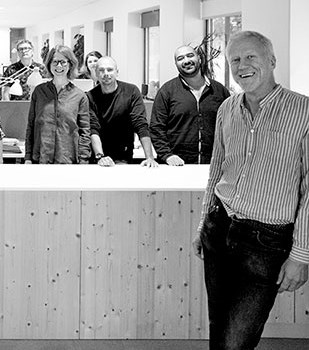Log cabins – every timber is unique, but the construction system is general, involving logs, dowels, axe-cut joints, frames and purlins. The logs are cut to the same length. They are placed so the thickest part of the log rests on the narrowest part of the underlying log for the best stability and weatherproofing. The technique for cutting out a joint tends to be common to a particular geographical area, but has to be adapted to each log.
When it comes to building in wood, the Nordic region has centuries of experience and knowledge. This has led to a varied range of techniques for construction and detailing, determined by the resources available locally. However, this expertise is in danger of being lost from our active knowledge bank. Let us work together to combat this and create a shared knowledge platform with space for every scale and level, everyone’s knowledge and intentions.
Wood as a material has the fantastic inherent property of being both general and specific, unique and standard all at the same time. Wood is plastic and formable, and today’s joinery workshops are an interface between software and material. Wood offers us endless opportunities to develop the construction industry of the future, if we use it with knowledge, respect and sensitivity.
How can we develop standards for a material like wood? Is it possible to create modern wood construction systems that are able to embrace both general and unique principles, like in a log cabin?
I can see the wood construction sector taking two main paths – both of which are equally important. Together they can generate innovation and inspiration for a future of socially sustainable building.
One path is based on continuing to develop industrial processes and methods: general and standardised, large-scale wood construction focused on wood-based products and building systems that also make use of other construction materials.
The second path is what we might call high-tech craftsmanship: development of the details and the craft with a view to both enriching architecture and creating new structural solutions.
Combined, these two paths can feed into each other, if developed in parallel. Maybe the wood construction standard can be a blend of the general and the unique, based on wood as a material. That would close the circle beautifully.


























